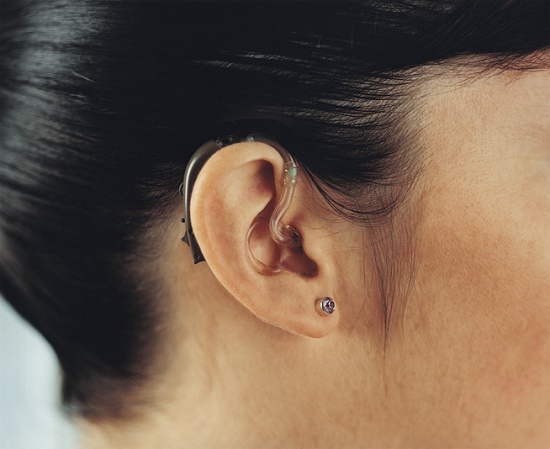
Have you ever had trouble hearing in a crowded room or restaurant but can hear without any problem at home? Do you have particular challenges hearing higher-pitched voices or TV dialogue?
If so, you might have hearing loss, and hearing aids may be able to help.
But how do hearing aids work exactly? Are they simple amplifiers, or something more complex?
This week we’ll be looking at how hearing aids work and how they are a great deal more sophisticated than many people recognize. But first, let’s begin with how normal hearing works.
How Normal Hearing Works
The hearing process starts with sound. Sound is essentially a type of energy that travels in waves, like ripples in a lake. Things produce sound in the environment when they generate vibrations in the air, and those vibrations are ultimately caught and transmitted to the ear canal by the outer ear.
After moving through the ear canal, the sound vibrations hit the eardrum. The eardrum then vibrates, increasing the original signal which is then transmitted by the middle ear bones to the snail-shaped organ of the middle ear named the cochlea.
The cochlea is full of fluid and tiny nerve cells known as cilia. The vibrations sent from the middle ear bones stir the fluid and stimulate the cilia. The cilia then transmit electrical signals to the brain and the brain interprets those signals as sound.
With most instances of noise-induced hearing loss, there is damage to the cilia. Consequently, the incoming signal to the brain is weakened and sounds appear quieter or muffled. But not all sound frequencies are uniformly weakened. Commonly, the higher-pitched sounds, including speech, are affected to a greater extent.
In a raucous setting, like a restaurant, your capacity to hear speech is compromised because your brain is receiving a diminished signal for high-frequency sounds. On top of that, background noise, which is low-frequency, is getting through normally, drowning out the speech.
How Hearing Aids Can Help
As you can see the solution is not simply amplifying all sound. If you were to do this, you’d just continue to drown out speech as the background noise grows to be louder in proportion to the speech sounds.
The solution is selective amplification of only the sound frequencies you have a difficult time hearing. And that is only feasible by having your hearing professionally examined and your hearing aids professionally programmed to amplify these specific frequencies.
How Hearing Aids Selectively Amplify Sound
Today’s hearing aids consist of five interior parts: the microphone, amplifier, speaker, battery, and computer chip. But hearing aids are not just simple amplifiers—they’re intricate electronic devices that alter the properties of sound.
This occurs by way of the computer chip. Everyone’s hearing is one-of-a-kind, like a fingerprint, and so the frequencies you need amplified will differ. The extraordinary part is, those frequencies can be determined precisely with a professional hearing test, technically known as an audiogram.
Once your hearing professional has these numbers, your hearing aid can be programmed to enhance the frequencies you have the most difficulty with, maximizing speech recognition in the process.
Here’s how it works: the hearing aid receives sound in the environment with the microphone and transfers the sound to the computer chip. The computer chip then translates the sound into digital information so that it can distinguish between assorted frequencies.
Then, based upon the programmed settings, the high-frequency sounds are enhanced, the low-frequency background sounds are subdued, and the enhanced sound is sent to your ear via the speaker.
So will your hearing go back completely to normal?
While your hearing will not totally return to normal, that shouldn’t stop you from accomplishing substantial gains in your hearing. For most people, the amplification delivered is all they require to comprehend speech and partake in effective and effortless communication.
Think of it in this way. If your eye doctor told you they could improve your vision from 20/80 to 20/25, would you go without prescription glasses because you couldn’t get to 20/20? Of course not; you’d be able to function just fine with 20/25 vision and the improvement from 20/80 would be considerable.
Are you set to see the gains you can attain with modern hearing aids? Call us today!
